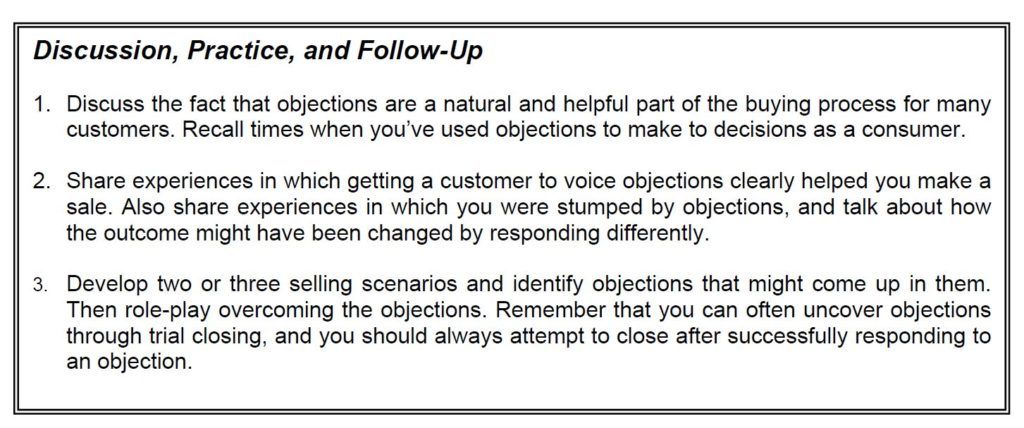Overcoming Objections
Article provided for The Plumb Club by Kate Peterson, PC Performance Concepts

Though it might be hard to believe, objections are a normal—even healthy—part of the selling process.
Quite often, they’re actually buying signals. Many customers raise objections as one of the final steps in reaching a decision. After all, if a customer objects, he’s obviously weighing the pros and cons of making the purchase.
It’s difficult to overcome objections if you can’t identify and isolate them, however. When a customer abruptly says, “Well, I think I need to look around some more” after you’ve been presenting merchandise for 20 or 30 minutes, you really don’t know why you didn’t make the sale. That’s because “I need to look around,” “It’s not quite what I had in mind,” and similar statements usually aren’t true objections. They’re simply ways to break off the interaction without revealing or resolving the real issues. And if you skipped over the early steps in the selling process, you’ll probably never understand what went wrong.
As we’ve discussed, selling is a generally sequential process that includes rapport building, profiling, presenting, and closing. Most of these steps can overlap or repeat, but if you get to presenting before you’ve done enough rapport building and profiling, you’re almost sure to trip up—especially when it comes to handling objections.
Remember:
- The better you are at profiling, the more likely you’ll be to suggest the right merchandise and present it in a way that addresses the customer’s motives for making the purchase.
- The better you are at building rapport, the more willing your customer will be to tell you whether and why something you’ve suggested really isn’t right.
If you manage the selling process properly, you won’t start presenting merchandise till you have enough rapport and information. Before you pull anything out of your showcases, the customer should feel relaxed and assured that you’re genuinely interested in him—in his wants, needs, and concerns. You should also know all you need to about the customer and the circumstances surrounding the purchase. Then your initial suggestions will probably be very close to the mark. If you approach presentations this way, it’s also easier to focus on one piece at a time and get the objections in manageable doses.

Kate Peterson
You can often uncover objections through trial closing. For example, after presenting a few choices you might test the waters with, “I think each of these has the beauty and quality you’re looking for. Which is closest to what you had in mind?” If you see a nonverbal objection—say, the customer hesitates or shakes his head—it’s time to do a little tactful probing: “You seem hesitant. What exactly don’t you like?” This will bring out real objections, not excuses, and you’ve got to deal with those before you can close the sale.
Overcoming objections is a step-by-step process:
- Listen carefully to the entire objection, without interrupting.
- If necessary, clarify the objection by asking questions and looking for nonverbal clues. Try to determine whether the customer really doesn’t like the item, or just wants additional information or validation. (If you do a good job of linking benefits to statements the customer made when profiling, objections will probably be very specific.)
- Put the customer at ease by expressing empathy. Even if you’re going to offer a counterpoint, begin with something like, “I understand how you feel,” “I’m glad you told me that,” or “I appreciate your concern.” This lets the customer know you’re listening, and that you care about what he’s saying.
- If the objection isn’t a rejection, try to resolve it by reviewing features and benefits, and then adding one or two more. Remember to focus on what you’ve learned about the customer, and to emphasize benefits related to the emotions that are motivating the purchase.
You can alternate these steps, depending on what seems appropriate in the situation. The important thing is keeping the customer engaged in the interaction. So, say what comes naturally, and what the customer needs to hear—and always use the resolution of an objection as an opportunity to close the sale.
